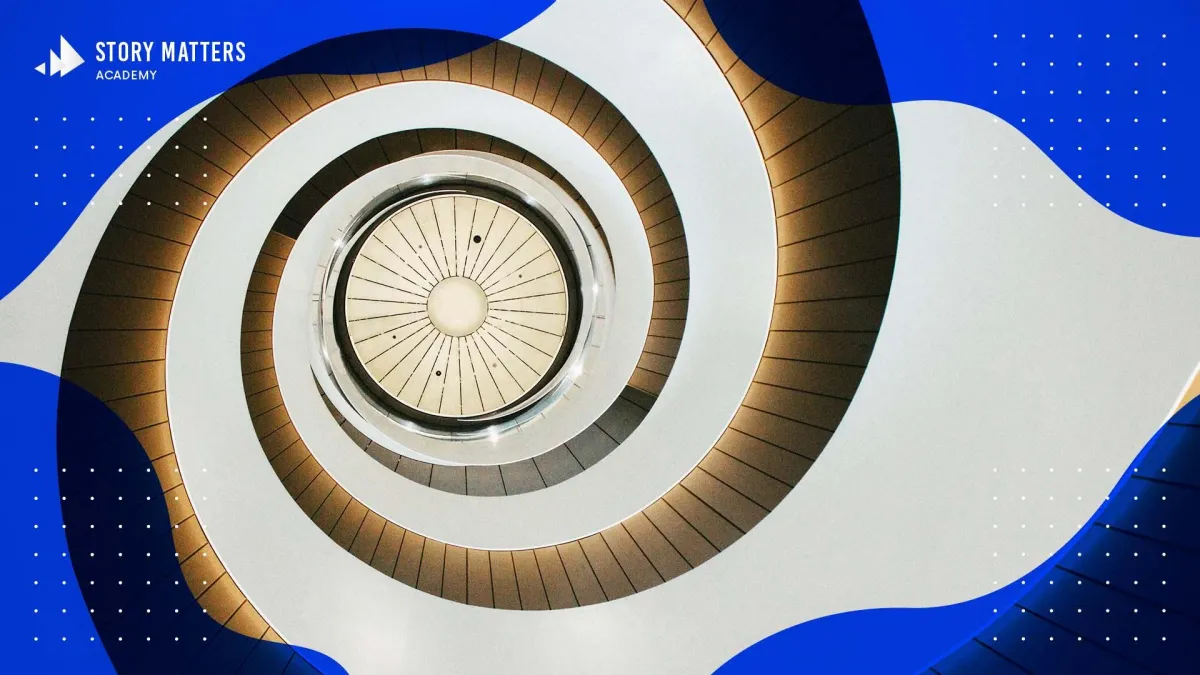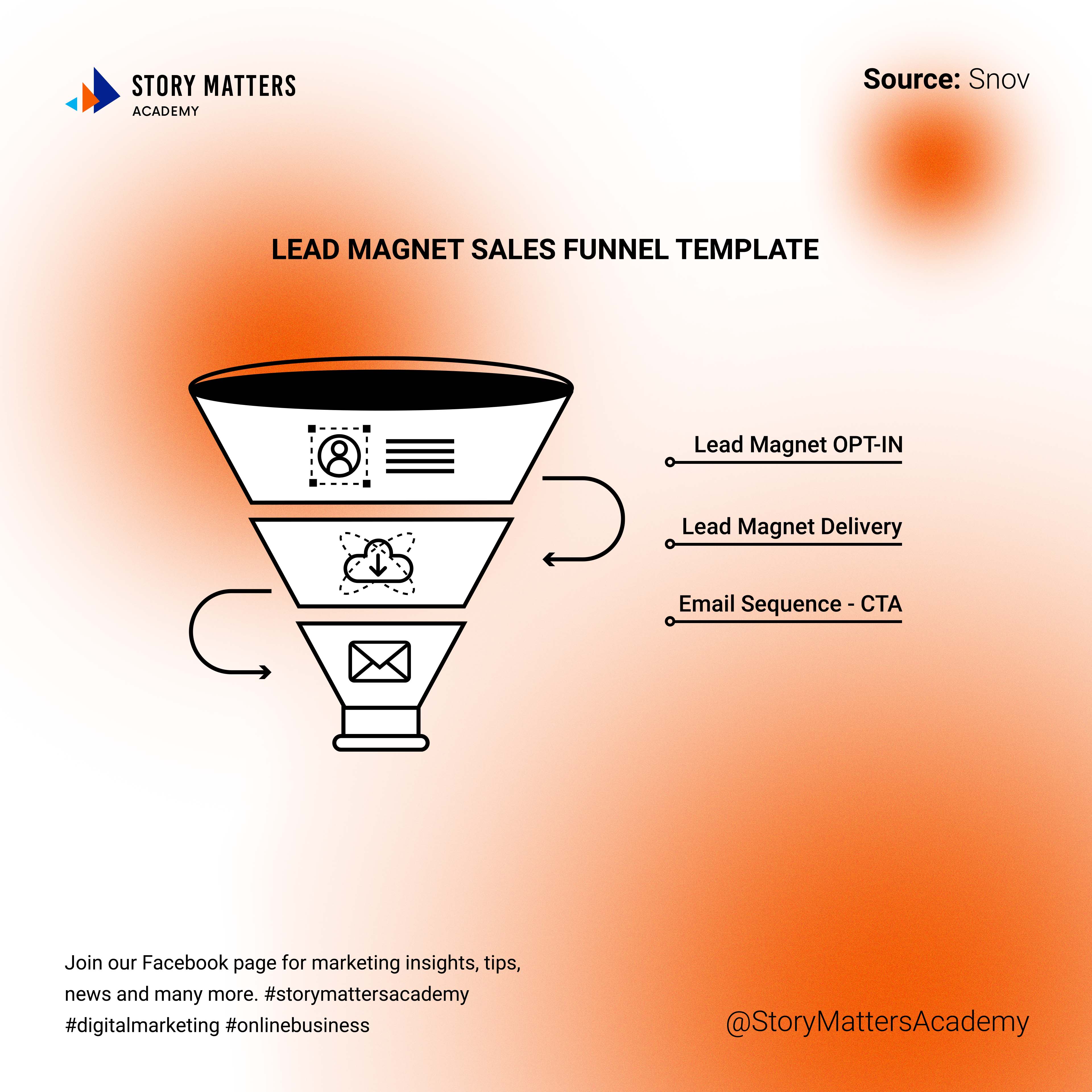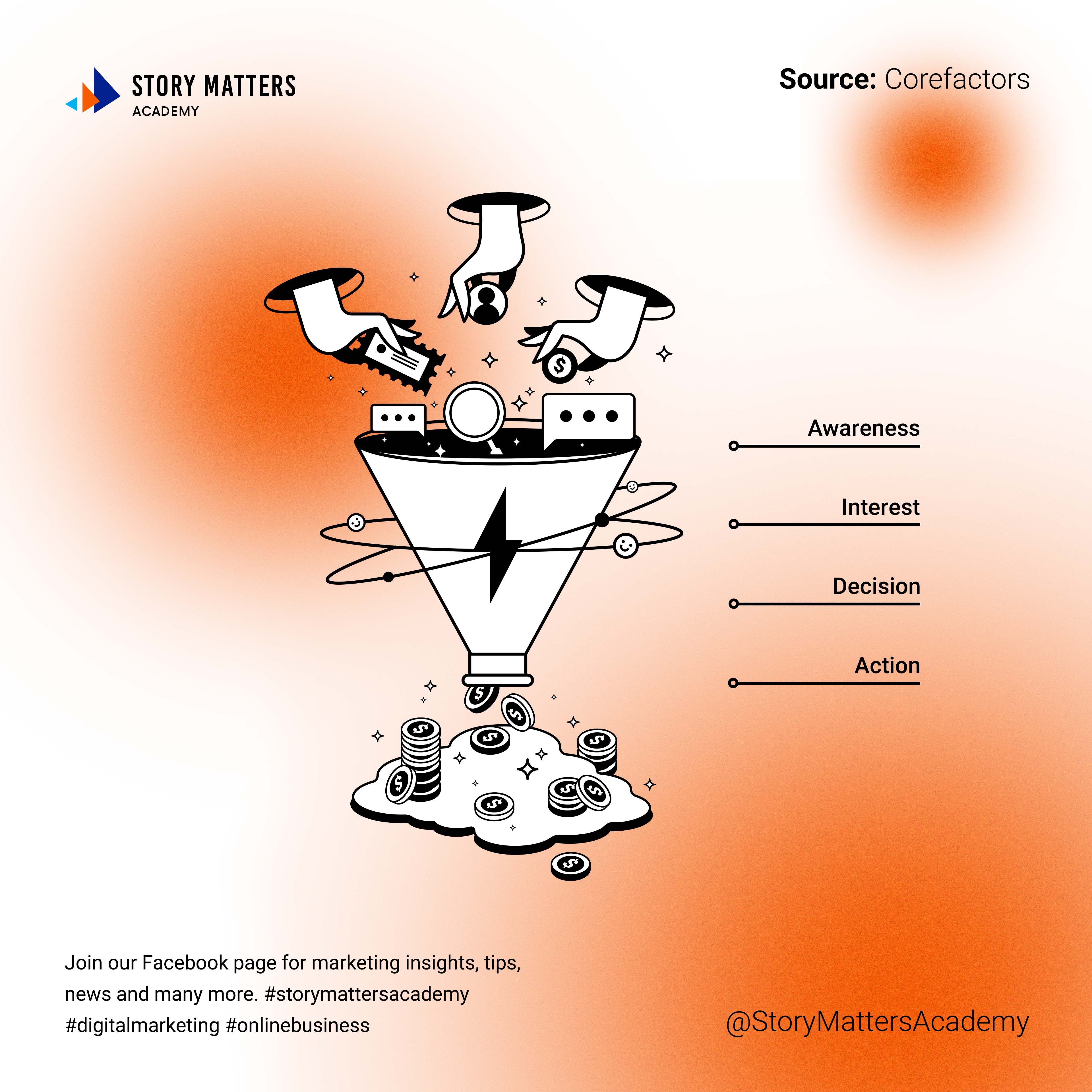StoryMatters Blog

6 Funnels That Convert
According to statistics, about 92% of people visiting your page for the first time are not ready to make a purchase. Using sales funnels, you can introduce customers to your product or service better. Moreover, Google Trends show that the interest in funnels has grown over the past 5 years.

What Is a Sales Funnel?
A sales funnel is a series of stages that a consumer goes through from the moment they draw their attention to your offer to the moment of purchase. This concept also has other names: Sales Pipeline, Sales Funnel, Customer Funnel, Marketing Funnel.
How Do The Funnels Work?
At the first stages, a rather large number of potential customers are attracted, however, as a rule, a small percentage remains at the final stage of the purchasing process. That is why this marketing term visually corresponds to a real funnel - the upper part is wide, and the bottom is narrow.
There are no universal funnels - everything depends on many factors: industry, business specifics, enterprise resources, target audience, etc. But the principles of forming any funnel are identical - the more carefully you research all the preferences of your target audience, the higher the percentage will reach the sell.
Russell Brunson, CEO of Clickfunnels, distinguishes 22 types of funnels in his The Funnel Hacker's Cookbook. In this article, we’ll discuss 6 of them that in practice work best.
Lead Magnet Funnel
A Lead Magnet Sales Funnel is widely used and easy to implement. In essence, a lead magnet is a free resource that attracts potential customers.
Free content is offered in exchange for their contact information. To access the content, they must first fill out a form on your site. Getting their contact information will help you build your email list.
Lead magnets are usually digital content. Lead magnet content types can include:
Discounts
Video
e-books
Case Studies
Guides
Checklists
Workbooks
Webinars
Templates
Once your prospective lead has provided their contact information so they can download your free content, a series of relationship-nurturing emails will begin. They are now in your lead magnet funnel.
After a few emails, your lead might decide that they want to know more about your company. Or maybe they won’t. It’s your job to make sure you anticipate their needs and craft your content so that it speaks to your desired customer.

Quiz Funnel
In a Quiz Funnel, the quiz itself can be considered as a lead magnet. It works like this: you post a quiz or test on your resource. Then users go through your quiz. In the end, you asked them to leave their contact details in exchange for a quiz result. You get the contact of your prospects and your users get satisfaction from the result of the quiz.
An interesting point is that you can add the ability to share your result on social networks to the quiz. This will increase the awareness of your site.
SLO Funnel
The goal of a Self Liquidating Offer Funnel (or the SLO funnel) is to make a sale and acquire a customer you can upsell your other offers to. You can start by promoting your small low-cost offers. It could be a $19 eBook, a $27 course, or a $37 swipe file, for instance.
Here’s how the funnel works. Say you’re selling an ebook for $19. This is your actual low-cost offer. Once your customer decides to buy your low-cost offer and puts in their credit card info, they’re led to an order confirmation page that offers them a mini-course on the same topic they can add to their existing purchase if they pay an additional $47. This is called an order bump.
Once the customer confirms their order (with or without buying the extra) you then lead them to a special one time offer, say a super helpful 7 module e-course that they can add to their cart, at a special one-time price of $250 instead of the existing price of $475.
The customer can then checkout with or without buying the special offer.
Membership (Continuity) Sales Funnel
A Membership Sales Funnel gets visitors to sign up to gain access to content or a certain service. They are sometimes called “Continuity Sales Funnels.”
Membership funnels can generate leads on the front end as well as the back. That’s because these types of sales funnels can provide recurring revenue when done correctly.
Members might be enticed by a free or low-cost offer to sign up. Once they are a part of your subscriber or membership base, you have the opportunity to upsell.
For example, subscribers to a free service may unlock more benefits if they sign up (and pay) for a premium subscription.
NOTE: Join Storytelling In Digital Age Masterclass to learn more about how to build funnels and how to engage your ideal customers using the art of storytelling!
Product Launch Funnel
A Product Launch Funnel lets an entrepreneur build anticipation before a customer is allowed to buy a product.
Small marketing “previews” about the product are sent, usually, at least a day apart, to build scarcity and urgency for the final day when the “cart opens” and customers may buy for a limited time. A defining feature of the Product Launch Funnel is closing the cart after a few days.
Webinar Funnel
This funnel will get people to register and attend your webinar events. The Webinar Funnel gives an entrepreneur more time to close potential customers at a higher price point, as most webinars are at least one hour long, and gives more time to address the false beliefs of customers. Webinar Funnels are an “event” and are broken into two phases.
During the first phase, visitors register for a seat to attend and hear success stories to increase curiosity. During the second phase, visitors attend the live webinar and watch replays while the window to buy begins to close, creating true scarcity and urgency.

Squeeze Page Funnel
A Squeeze Page Funnel consists of 2 pages and is used to give something for free in exchange for contact information such as an email address. On page one (the squeeze page), you hook your visitors with an attention-grabbing headline and get them to fill out the opt-in form.
When they submit, they’re sent to page number two, the thank you page. On the Thank You page you deliver what you promised, then you have the option to send them to another funnel.
The only goal of a Squeeze Page Funnel is to get your visitors to give you their email addresses. To maximize the opt-in rate you should keep it very simple and create an interesting headline. There are no distractions on a Squeeze page because you want your visitors to enter their email addresses and submit the form without doing anything else.
Conclusion
Depending on your goals, we can build the right funnel for you. Remember that by tracking the metrics of each stage of the funnel, you can understand at which stage you have problem areas in marketing. How to analyze metrics and KPIs, you can read in our blog. Stay tuned to learn more about digital marketing with the StoryMatters Academy!
Build a Marketing Strategy for your Story-Based Funnel
2 х 180-minute amazing video training, StoryTelling Welcome sequence, 1-on-1 Strategy Call, 8 Funnel Blueprints, Resource guide & much more…
$563 in Value, JUST $27 USD!

© 2023 StoryMatters Academy

We help Authors, Coaches, Experts, and Business Owners tell Powerful Stories that change lives.
Join the StoryTelling in the Digital Age MasterClass and Schedule your 1 x 1-on-1 FREE Marketing Discovery Call to help you create your story that attracts your audience to invest in your product or service.

